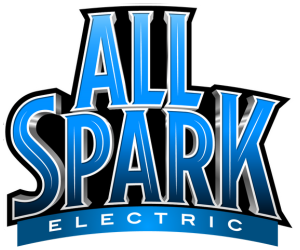How Many Amps Does a Refrigerator Use? Find Out Here
If you’re planning a kitchen remodel, installing a new outlet, or adding another appliance to your home, you may have wondered, how many amps does a refrigerator use? At All Spark Electric in Fort Worth, TX, we get this question all the time—especially from homeowners trying to avoid tripping breakers or overloading circuits. Understanding how much electricity your fridge draws can help you stay safe, efficient, and code-compliant.
Understanding Amps and Why They Matter
Before we dive into numbers, let’s break down what amps actually are. Amps (short for amperes) measure the amount of electrical current flowing through a circuit. Voltage measures the pressure pushing the current, and watts are the total power used. The three are related by a simple formula:
Amps = Watts ÷ Volts
This means that the number of amps your refrigerator uses depends on how much power it needs and the voltage of the outlet it’s plugged into. In most U.S. homes, kitchen appliances run on 120 volts.
So, How Many Amps Does a Refrigerator Use?
Most modern refrigerators use between 3 and 6 amps during normal operation. However, when the compressor kicks on—usually right after the fridge starts up—the amperage can temporarily spike to 10 to 15 amps or more. This is called inrush current, and it’s why refrigerators should be on their own dedicated circuit whenever possible.
Smaller units like mini fridges typically use 1 to 2 amps, while larger side-by-side or commercial models can draw closer to 8 to 15 amps, especially at startup. Features like built-in ice makers, touchscreens, and dual compressors can increase the electrical demand even further.
Keep in mind that these are general estimates. The actual number will depend on the refrigerator’s size, brand, energy efficiency rating, and even the age of the unit.
Keep in mind that these are estimates. The actual amp draw varies depending on size, age, efficiency rating, and features (like ice makers or smart screens).
Why Knowing Amp Usage Matters for Homeowners
Knowing how many amps a refrigerator uses isn’t just a fun fact—it can prevent electrical hazards. In Fort Worth homes, older kitchens often weren’t built to handle today’s appliance loads. If you plug a refrigerator into a shared circuit with a microwave or coffee maker, you may:
-
Trip the breaker frequently
-
Cause electrical overheating
-
Violate electrical code
That’s why we always recommend giving refrigerators their own dedicated 15- or 20-amp circuit, especially during remodels or panel upgrades. It ensures stable power and improves appliance lifespan.
How to Check How Many Amps a Refrigerator Uses
If you want to check your fridge’s exact amp usage:
-
Look at the data plate or label, usually inside the fridge or on the back. It may list amps directly or show watts and volts.
-
Use a clamp meter or smart plug to measure real-time usage. Some smart plugs even track usage history.
-
Multiply the listed wattage by usage time to estimate monthly energy draw.
Let’s say your refrigerator uses 720 watts and is plugged into a 120-volt outlet:
720 ÷ 120 = 6 amps.
You can also check your user manual or manufacturer’s website for more exact numbers.
What About Energy-Efficient Refrigerators?
Energy Star-rated refrigerators typically use fewer amps overall. They run more efficiently, cycle less frequently, and draw less power during startup. That said, the startup inrush current is still something to plan for when designing a safe electrical circuit.
If you’re upgrading your kitchen in Fort Worth, now’s a great time to have All Spark Electric evaluate your panel and appliance circuits for efficiency and safety.
Should Your Refrigerator Be on a GFCI or AFCI Outlet?
This is another common question we get in Fort Worth homes. Per National Electrical Code (NEC) updates, kitchens must have GFCI (ground fault circuit interrupter) protection in many areas. However, refrigerators are sometimes exempted from GFCI requirements because nuisance tripping could cause food spoilage.
In new homes or during remodels, your refrigerator may need to be:
-
On its own dedicated circuit
-
AFCI-protected (arc fault)
-
Possibly GFCI-protected, depending on local code and outlet location
An experienced electrician (like us!) can help interpret code and ensure your setup is safe and compliant.
What to Do If Your Fridge Trips the Breaker
If your refrigerator keeps tripping a breaker, here’s what to check:
-
Are other appliances on the same circuit?
-
Is the breaker rated for 15 or 20 amps?
-
Has your panel been updated recently?
-
Is the circuit GFCI-protected and located near a water source?
Persistent tripping could mean your circuit is overloaded—or it could point to a wiring issue or internal refrigerator fault. Either way, it’s best to call a licensed electrician to inspect the problem.
All Spark Electric Keeps Fort Worth Kitchens Safe
At All Spark Electric, we specialize in home electrical safety—from appliance circuits to panel upgrades. Whether you’re adding a new refrigerator or remodeling your kitchen, we’ll make sure your wiring is up to code and ready to handle today’s power demands.
We’re local to Fort Worth, TX, family-owned, and committed to clear pricing and top-tier workmanship. If you’re unsure whether your fridge is safely wired, give us a call for a circuit inspection or load calculation. Reach out to All Spark Electric today to schedule a home visit. We’ll make sure your appliances are powered safely and efficiently—so you can enjoy peace of mind (and cold food).


